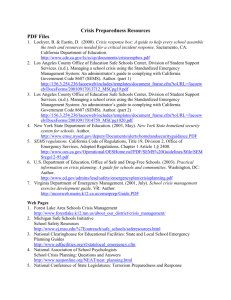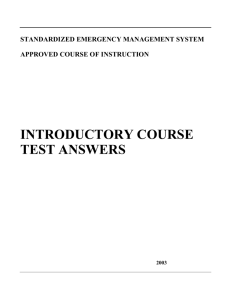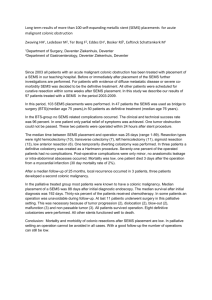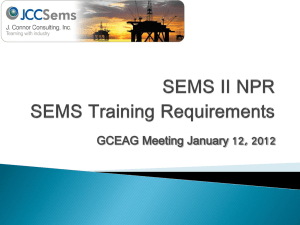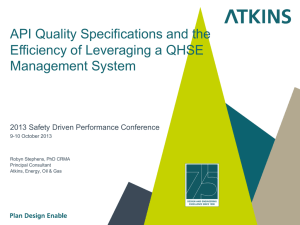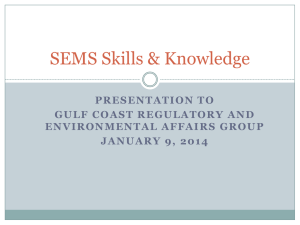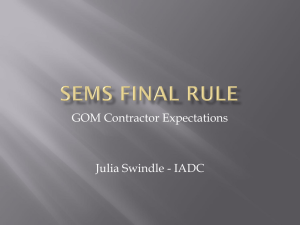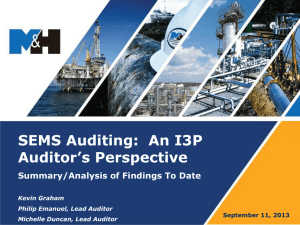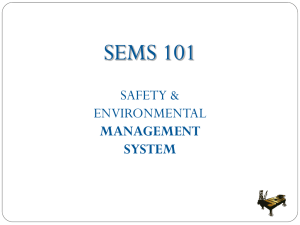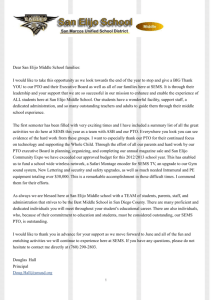Williams
advertisement
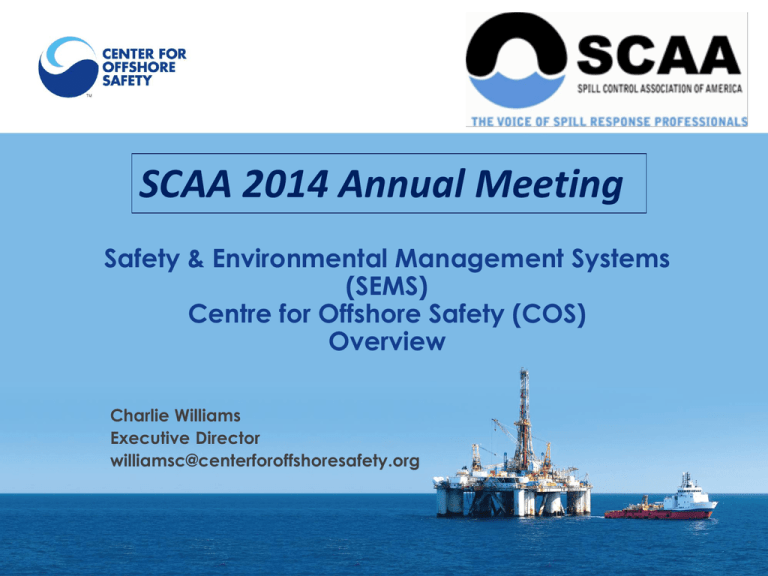
SCAA 2014 Annual Meeting Safety & Environmental Management Systems (SEMS) Centre for Offshore Safety (COS) Overview Charlie Williams Executive Director williamsc@centerforoffshoresafety.org Deepwater – Industry / Focus Approach Well Containment & Intervention Capability Joint Industry Task Force Groups Formed After Macondo Offshore Equipment Spill Response Capability Safe Drilling Operations Offshore Procedures Prevention & Industry Drilling Standards Subsea Well Control & Containment Oil Spill Preparedness & Response 2 Objectives • Emphasize the role of SEMS and its execution in the delivery of safe and reliable operations • Update you on COS and COS activities 3 Safety & Environmental Management Systems What are the elements of SEMS? Leadership Mechanical Integrity Safety and Environmental Information Pre-Start-Up Review Hazard Analysis Emergency Response and Control Management of Change Incident Investigation Operating Procedures Audit Safe Work Practices Records and Documentation Training Safety and Environmental Management Systems (SEMS) • Goal: Safe & Reliable Operations / Operational Integrity • SEMS is a key mechanism to reduce the likelihood of major incidents 5 Bow Tie Approach Barrier Elements 6 Operator/Contractor Interfaces 7 Core Functions • Effectiveness Assurance & Measurement Auditing Accreditation & Certification • Find SEMS Gaps SEMS audits Performance data collection and analyses • Close the Gaps Share and learn from the results Develop and share good practices • Improve Skills and Knowledge 9 COS Delivery • Performance Measurement and Learning – SEMS Audit Requirements and Results – Safety Performance Indicators Program – Learning from Incidents Program • Good Practices – Leadership Site Engagement – Skills & Knowledge Management System • Knowledge Sharing – COS Safety Forum – OTC/COS SEMS Session 10 Elements of an effective Skills & Knowledge Management System (SKMS): 1. Commitment & Objectives 2. 3. 4. 5. 6. 7. Overview & Scope Accountability & Responsibility Roles &/or Tasks Assessment & Remediation Auditing & Quality Assurance Records & Documentation What’s next for COS • SEMS Effectiveness Measures, Tools, & Techniques – Continuous Improvement • Expand Audit Protocol Guidance – Respond to SEMS Regulatory Changes – Contractors – Marine • • • • Stop Work and Ultimate Work Authority FAQs SEMS Lead Auditor Training & Individual Certification Coast Guard Safety Culture 12 THANK YOU Questions Charlie Williams Center for Offshore Safety Executive Director williamsc@centerforoffshoresafety.org SEMS Toolkit and Accreditation/Certification Toolkit • SEMS Audit Protocol (revision 2 complete) • Compliance Readiness Worksheet • Operator-Contractor Letter Templates • Audit Guidance Document (revisions underway) Accreditation and Certification • Auditor Qualification & Competence Requirements • Training Program Requirements for Auditors • Certification Requirements • Accreditation Requirements • Audit Report Forms 14 SEMS II • “…working with the COS workgroups on developing indicators to gauge industry OCS performance other stakeholders. …” • COS-2-01, Qualification & Competence Requirements for Audit Teams & Auditors • COS-2-03, Requirements for Third-party Auditing & Certification • COS-2-04, Requirements for Accreditation of Audit Service Providers • Audit Service providers must be accredited by a BSEEapproved accreditation body .. like COS 15 Safety Performance Indicator Program Objectives – Collect and learn from safety performance – Assessment of whether the measured performance meets or exceeds industry norms through benchmarking and sharing of information. – Development of collaborative solutions to improve performance. * Not the complete set of COS SPI 16 Learning From Incidents Program • Objectives – Provide members a mechanism for sharing timely information which can be used in decision-making regarding standards and practices; – Complement the information from the Safety Performance Indicator Program • Scope – SPI 1 and 2 incidents – High Value Learning Events • Information – – – – – • Description Site, Operation and Activity Type Consequences Areas for improvement Lessons Learned Analyses and Learning to Improve 17
